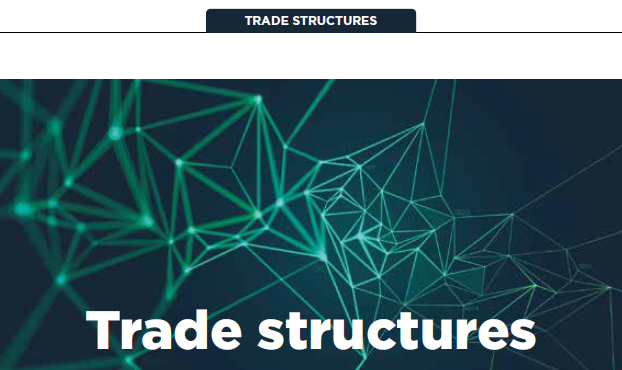Transition Management Guide 2023 - Trade Structures
27th April, 2023 | Global Investor

Market participants discuss the value of getting traders more closely involved in the transition process, obtaining their feedback on issues such as the pace of trading, how quotes should be sourced, and the best way to group trades.
This article is part of the 2023 Transition Management Guide, which can be accessed here.
One of the most interesting observations from last year’s roundtable event was the value of placing traders much closer to clients than ever before, pulling traders into client conversations and asking them question such as ‘if it’s a volatile day, are we slowing down the pace of trading?’ or ‘are we putting our trades into smaller baskets, getting a greater number of quotes and maybe changing which dealers we are getting quotes from?’.
Chris Adolph, director of implementation services EMEA, Russell Investments observed that although the transition manager may be great at pulling resources together, as an expert on what is happening at the time the trader provides great insight.
“We have always involved the traders in the transition process,” he says. “Their insight is particularly invaluable when assessing the actual liquidity of less liquid securities (often not captured well by models) and how we access blocks, use specialist dealers, or indeed just for their market insights.” As the company only acts in a fiduciary capacity, it can involve the traders at every step of the transition process without the client being concerned about information leakage. This is particularly important with less transparent asset classes such as foreign exchange or fixed income.
“As we only act in an agency capacity we also involve the traders directly in client calls before, during and after a transition has begun,” adds Adolph. ��“Their insights are always appreciated and we have only ever had positive feedback when they have been involved.”
No conflict
When State Street is trading equities or fixed income as asset classes it also has zero ability to trade on a principal basis, so there is no conflict in terms of interaction with principal trading or in-house trading book explains James Woodward, global head of its transition management business.
“Our trading team are fully involved with the transition team and are often involved at the start of the project in terms of looking at liquidity profiles and providing input and insights in terms of strategy, market dynamics and market intelligence,” he says.
“During a trade they are communicating how we have been able to access markets and providing transaction costs analysis insights and comments for post-trade. Our clients appreciate the direct interaction with traders and that is normal for them, so I think it adds value.”
Sell side traders and their feedback are an important part of the transition process before, during and after the actual execution of trades. At Citi this stays ‘in-house’ rather than from multiple outside sources to minimise potential information leakage whilst still providing comprehensive insights into market liquidity explains Stuart Zanchi, senior multi-asset transition manager.
“Ultimately though the responsibility lies with the transition trader who has a holistic view of the project balancing all asset classes, regions and timing,” he says. “Clients differ on how close to trading they like to have visuals on, although generally they tend to take a step back once they see the team and project reporting in action and trust us, the process and transparency.”
Risk management
The execution team - and in particular the data they accumulate - allows Citi to address the core and tail risk of clients’ transitions. At the core of each transition, trade data enables the transition team to build a strategy based on forecasting the optimal strategy (% ADV) in the case of equities and duration and default risk appetite in the case of a fixed income transition.
“The successful implementation of a trade strategy based on our market data will enable us to complete on average approximately 90% of our transition,” says Andrew Orr, senior multi-asset transition manager at Citi.
“For the ‘tail risk’ phase (the remaining 10%) we will engage with the execution traders on a security-by-security basis, to identify appropriate clearing level, liquidity sources and execution timing. Incorporation of this direct market knowledge enables the senior transition project manager to minimise implementation costs and execution timing - both of which are essential for a successful transition result.”
Lengthy involvement
Macquarie Capital has involved its traders in project management exercises for some time and not just during the execution phase – they are involved right from the outset in terms of planning, to get their advice and enable them to opine on the trading strategy.
This is important because strategy is determined by factors such as current market conditions, investor sentiment, appropriate liquidity sources for a particular trade, and the venues or counterparties employed explains Paul McGee, head of portfolio solutions EMEA.
“Then we have to decide how we are going to maintain confidentiality, whether it is the sort of trade that we split into tranches,” he adds. “Input is important from traders who are close to markets and close to stocks, understanding where the best sources of liquidity are. So right from the outset we would involve the traders and that helps to shape the trading strategy well ahead of time as to how we might tackle a project so there are no surprises when we when we do go live.”
McGee suggests it is comforting for clients to meet with the execution specialists who will be controlling the trade and to hear directly from them - the specialists on the ground – about what they are observing about markets and stocks and what might be the challenges in that particular event.
Traders are an intrinsic part of the transition process and always have been agrees Andy Gilbert, EMEA head of transition client strategy, BlackRock. “Their experience and insights are critical to the development and execution of any transition strategy. The key here is that everyone’s interests are aligned, there are no conflicts of interest, and everyone is working as a fiduciary to the client.”
Client demand
According to Nick Hogwood, EMEA head of transition management at BlackRock, trader contact with the client has evolved from a nice-to-have to a must-have. With clients increasingly scrutinising venue and broker selection - and seeking assurance on how the transition manager safeguards the portfolio against information leakage - the trader now has much more direct contact with the client.
“Traders can be involved in either the early stage of the design of an execution strategy or throughout the project, but I think you have to keep in mind that they have a day job and this is not necessarily their role,” says Cyril Vidal, head of portfolio transition solutions, Goldman Sachs.
“I would almost flip this around and take the view that it is more the role of the transition manager to get closer to their traders and to be able to understand the constraints these traders are operating under. So without necessarily stepping into the shoes of a trader, having an understanding of the parameters that an algorithm will use so you can really bridge the gap between what the client wants to achieve and what is possible and can be implemented by the desk.”
Clients may have different sets of objectives or specific constraints. Vidal reckons that if you put all these different constraints in front of the trader it could slow down the progress of the transition or be otherwise counterproductive or detrimental to the outcome.
“It is more important for the transition manager to understand the environment the traders are operating in rather than traders understanding what the transition manager wants to do, although both are actually important,” he says.
“Some clients will want to have direct access to the persons involved in the implementation of their trades, but more often what I observe is that clients just want to be able to talk to their transition manager and receive a comprehensive summary of feedback from the trading desk, whether that relates to market conditions, liquidity, or negotiation strategies.”


